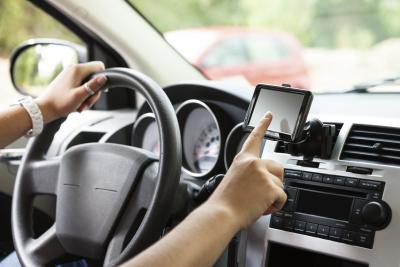
The Global Positioning System is a network of satellites that orbit the Earth at an altitude of approximately 12,550 miles. Each satellite circles the planet twice daily. On June 26, 1993, the U.S. Air Force launched the 24th Navstar satellite completing the network to bring GPS online. GPS technology makes it possible for you to locate your -- or your car’s -- exact position on Earth within just a few feet.
The United States Air Force oversees operation and maintenance of the satellites and flies up to 31 GPS-enabled satellites at any given time. This is done to assure at least 24 of them are operating at full strength 95 percent of the time. The GPS satellites serve both military and civilian users. Civilians can use the system freely on a global basis, while military applications are available to U.S. armed services and our allies. Other authorized government agencies can also use the military GPS service. GPS is made up of three individual segments: the space segment, the control segment and the user segment.
A constellation configuration of satellites transmits radio signals to users on the ground. The GPS constellation is arranged into six orbital planes equally spaced above the Earth. The constellation arrangement ensures at least four GPS satellites are “visible” from any location on the planet. Each satellite transmits positioning information and the current time constantly. The signals transmitted by the satellites travel at the speed of light and are received by your GPS device on Earth. By calculating how long it takes for the signals from at least three of the satellites to reach your GPS, your exact location can be determined. This process is called trilateration.
The satellites are monitored by a worldwide network of tracking centers and other dedicated facilities. These stations can monitor transmissions, analyze data and send operational commands to the constellation or individual satellites. The GPS.gov website states the control segment includes a master and alternate master control station, 12 command and control antennas and 16 additional monitoring sites.
While designed originally for military use, GPS has become an irreplaceable part of everyday life over the past two decades. GPS technology is used across all facets of business including farming, construction and banking. Since GPS is based on atomic time, it’s the heart of many communication systems and power grids worldwide. One of the most popular applications of GPS is the car navigation system. Today’s car GPS devices provide much more than just location. They show traffic patterns and delays, suggest alternate routes and point out locations of interest along the way. Future uses may include driver assistance features that could possibly take control of your vehicle remotely to avoid collisions or other dangerous situations. Someday soon you may be able to get into your car, program a destination and then take a nap while GPS becomes your personal chauffeur.